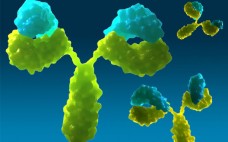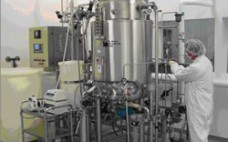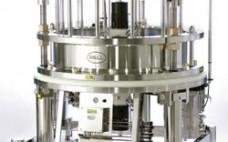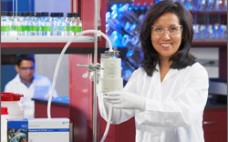Platform methods, high resolution and ease of use have made the iCE system the gold standard for protein charge heterogeneity characterization for biopharmaceuticals. At 15-18 minutes per sample, iCE methods are already fast and simple but now they are even better. In this white paper we describe a high throughput 10 minute charge heterogeneity analysis method and performance improvements that provide automated analysis of 100 samples at a time.
Downstream
Purification of Oligonucleotides on TOYOPEARL GigaCap® Q-650S
TOYOPEARL GigaCap Q-650S is capable of delivering oligonucleotides of comparable purity and slightly higher process yields under the same operating conditions to those seen with resins requiring higher operating pressures. This capability allows chromatographers to purify oligonucleotides without the added expense of purchasing high pressure manufacturing equipment.
Polishing of Monoclonal Antibodies Using Capto™ adhere ImpRes in Bind and Elute Mode
MAbs and MAb conjugates are today in great demand for use as biopharamaceuticals. As a result, more cost-effective, efficient, and flexible process purification schemes are one of the highest priorities for MAb manufacturers. In this work, results from two case studies using Capto adhere ImpRes, a multimodal anion exchanger designed for polishing, are presented. Two different MAbs were purified in bind and elute mode. The results show high yields of MAb monomers, good clearance of aggregates, HCP, and leached protein…
Streamlining Downstream Process Development
Normal-flow filtration is used throughout downstream processes for biologics including depth, sterile, and viral filtration applications. Because of its ubiquity in large-scale biomanufacturing, using the most efficient normal-flow filter media area and type can lead to significant cost savings. But determining the most effective media type and area can be time consuming, labor intensive, and complicated because of a lack of specialized laboratory-scale equipment.
The equipment commonly used in this evaluation presents several disadvantages, including poor integration of multiple components from different sources (including pressure sensors, signal conditioning, data acquisition, balances, and pumps), continuous operator monitoring, and decreased portability of most systems due to their numerous components. This white paper describes how Genentech Inc. and PendoTECH collaborated on developing an integrated filter-sizing system that addresses these challenges and aids in efficient evaluation of filter media for manufacturing-scale processes.
A Novel Filtration System Used to Intensify Upstream and Downstream Operations
Want to improve your bioprocess? The ATF™ System from Refine Technology was designed to do just that. Used in various bioprocessing applications, this system provides a more reliable and efficient process of cell separation with the inherent ability to support cell growth to extreme concentrations. This educational webcast discusses the Alternating Tangential Flow technology of the ATF System and its many benefits, including:
• Near-linear scale-up
• A filtered product stream ready for purification
• Faster, simpler virus production with a reduced cost of goods
• And more
Join John Bonham-Carter, VP of Sales and Business Development at Refine Technology, as he provides a detailed look at the ATF System, its applications and its benefits.
pDNA Production and Purification
In recent years, there has been a growing demand for DNA-based therapeutics, commonly known as gene therapy, to combat genetically-based pathologies. Because plasmid DNA have significantly different biophysical characteristics than proteins, their production can have a drastic impact on downstream purification unit operations. Join Dr. Stephen Palmieri and Dr. Jesse McCool of Lonza Biologics and Dr. Fred Blattner of Scarab Genomics as they take a detailed look at the challenges faced by pDNA manufacturers and how Lonza’s pDNA Production Platform addresses those challenges.
Improving IEX Throughput and Performance with Differentiated Chromatography Sorbents
As upstream processing becomes more optimized, it increases the amount of impurity and contaminants to be removed from large volumes of feedstock. With this added pressure on downstream processing, there is a pressing need for more efficient chromatography operations.
In this paper, the authors describe how they characterized differentiated selectivity of Q and S HyperCel ion-exchange sorbents. They evaluated the dynamic binding capacity in various pH, conductivity, and residence time conditions; carried out a separation of a model mixture to further characterize the sorbents’ specific selectivity; and report on a real case application in which one was used in a capture step for purification of a recombinant protein from an E. coli lysate.
Improving Downstream Processing Using Membrane Chromatography
The chromatographer is faced with a variety of anion and cation exchange phases that include a limited range of functional groups. These groups are attached to a wider range of base matrices, such as sorbents for column applications, monoliths and membranes. When ion-exchange membranes are used in chromatography devices, they demonstrate very high usable flow rates with enhanced throughput. Additionally the pre-packed format of these columns enables ease of use and unit-to-unit consistency. It also allows for a disposable chromatographic processes that eliminates costly and time-consuming cleaning validation.
During this on-demand webcast, diverse case studies will be presented that feature applications ranging from contaminant clearance to capture of target molecules in downstream purification processes. These studies highlight scalability, fast and efficient capture of large molecules, and improved process economics. When used in these applications, ion-exchange membranes proved a demonstrable alternative to packed bed chromatography and is better suited for subsequent purification processes..
Join Ajay R. Lajmi of Pall Life Sciences as he takes an in-depth look at the trends and challenges facing downstream processing and illustrates the benefits of membrane chromatography vs. resin chromatography.








